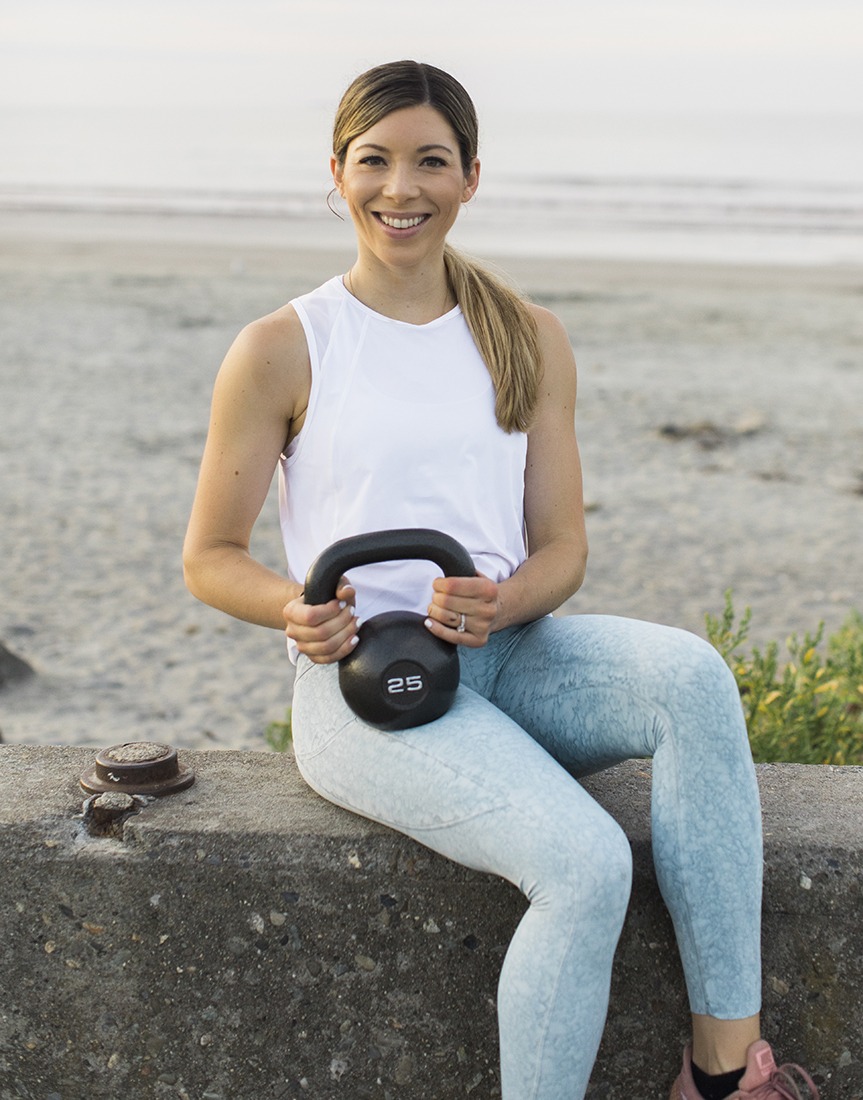I’m so pleased to share this guest post from Jennifer Reynolds, PT, DPT, TPS, and Owner of Reynolds Physical Therapy in Barrington, Rhode Island. I worked with Jennifer after having my son Brady at the end of March, and we’ve stayed in touch since. We both feel strongly about women’s health and getting more information out there about rehabbing your pelvic floor after birth. If you are active and want to be active for a long time after having kids – you need to understand and be thinking about your pelvic floor.
First, we thought we’d start with what exactly the pelvic floor is, and why it’s important. So without further ado – I’ll let Jennifer take it away…
The Pelvic what?? Floor? What is that?
Pregnancy and childbirth are a challenge for our bodies. A challenge our bodies can handle beautifully. But, a challenge nonetheless. In a relatively short period of time a woman’s body will change dramatically with pregnancy. Our pelvis will widen, our ribcage will expand, our abdominals will stretch, and our pelvic floor muscles will stretch as well.
Pelvic floor? What? Do I have a pelvic floor? Yes, you have a pelvic floor. The pelvic floor is a group of muscles at the bottom of your pelvis. They are around the vaginal and anal openings.
The muscles that make up the pelvic floor play an important role in our most intimate functions. They control pee, poop and sex, hold up your bladder, rectum and uterus and stabilize your pelvis. And, for the most part we never think about them. In fact, most women don’t think about them until they have a problem. Perhaps, you leak urine with sneezing, coughing or when you exercise. Or maybe you have an increase in urinary urge and then leak urine. Or maybe you are struggling with returning to the exercise you enjoy after having a baby.
During pregnancy and childbirth, the pelvic floor undergoes tremendous stretch and strain as they support the growing baby and allow for the baby to be born. After, pregnancy and childbirth these muscles require more attention so you can return to exercise without pain, be able to control your pee and enjoy sex again.
Can you imagine having an injury to another body part? Maybe your shoulder or your ankle. Would you expect to return to all your activities without any difficulty? Or would you expect to have to rest, recover and rehab that shoulder or ankle? The pelvic floor is no different than any other group of muscles in your body. They need to rest, recover and rehab after a pregnancy and delivery as well.
Returning to your previous exercise or lifestyle without considering your pelvic floor can be challenging. Perhaps you are not sure where to start or how to reintroduce exercise. A pelvic Physical Therapist can help you through the process of rest, recovery and rehab. A skilled pelvic PT will help guide you through the various stages of rehab and return to your previous active life.
Some frequently asked questions:
Q: “How quickly can I return to running after having a baby?”
A: In general, the answer is 12 weeks postpartum. However, there are a lot of factors that go into the decision for a woman to return to running after having a baby. It is recommended woman see a pelvic physical therapist for a pelvic floor screen before returning to running to help evaluate the pelvic floor musculature for strength, function and coordination of the abdominal muscles and the pelvic floor muscles. A physical therapist can also help you consider other factors that are important to consider before returning to running which are: your previous level of activity before and during pregnancy, including running, how well you handle the load and impact of running, strength and core stability, breastfeeding, amount of sleep, scar tissue etc.
Q: “What makes running challenging to the pelvic floor?”
A: Running requires the effective management of intra-abdominal pressure as well as ground reaction forces transmitted through the lower limb and pelvis. A pregnancy and delivery place a great deal of stress on the pelvic floor, hip and abdominal muscles. The changes the muscles go through during a pregnancy and delivery may make it more difficult for your body to manage the intra-abdominal pressure and ground reaction forces which can lead to urinary leaking, pelvic organ prolapse and/or injury. But, it doesn’t mean you can’t rehab your pelvic floor, abdominals and hip musculature to return to running. Guidance and coaching from a pelvic physical therapist can help you rehab and return to running safely.
Q: “What are some signs and symptoms of pelvic floor dysfunction?”
A: Great question! Some things to look out for in the postpartum period and with the return to running are:
- Leaking urine or inability to control bowel movements
- Heaviness/ dragging in the pelvic area
- Pelvic or lower back pain


